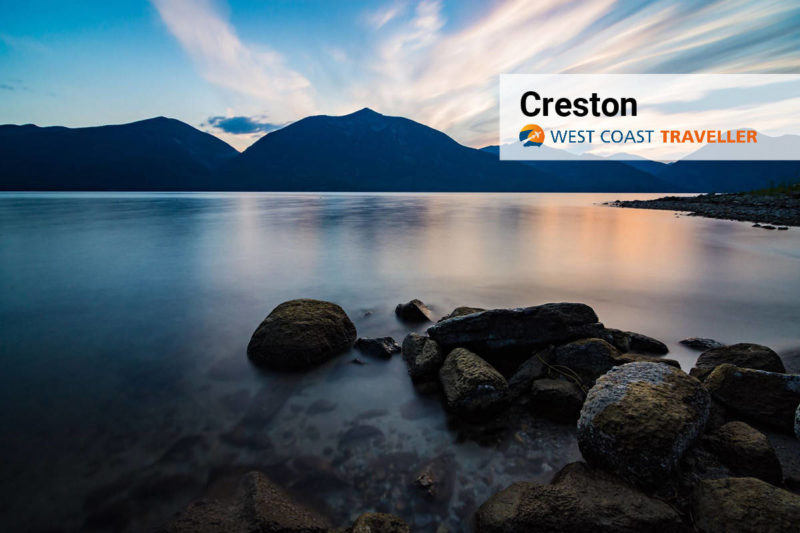Surrounded by mountains, the Creston Valley and Kootenay Lake are vibrant with creative souls and unique offerings.
Far from the stresses of city life, this is a place to escape the crowds, relax and soak up your surroundings, from the clear waters of Kootenay Lake, across orchards and vineyards, through wetland and wilderness teeming with life.
Explore the trails and boardwalks of the wetlands. Poke around the local shops or sample some tasty treats offered in the local bakeries and cafes. Pick up a copy of the Creston Downtown Walking Tour and immerse yourself in the arts and culture scene. Be inspired by the Artisans of Crawford Bay, just a one-hour drive north along the scenic Kootenay Lake.
Naturally abundant, this area is rich in agriculture-related businesses and services, including a growing wine industry, fruit and vegetable markets, handcrafted organic cheese and milk, or animal and grain farms. Stroll the thriving farmers’ market downtown on Saturdays from May through to October, and load up on produce, baked goods, meat products, soaps, crafts and jewellery.
Outdoor recreation offers the chance to experience some of the region’s best landscapes – boating and fishing in both Kootenay Lake and Duck Lake, golfing, hunting, hiking and exceptional backcountry skiing, snowshoeing and snowmobiling in the winter months.
Step back in time and learn about the history of the area. The Lower Kootenay Band of the Ktunaxa nation carries forth its ancient cultural heritage and a language so distinct that it’s unconnected to any other in the world. For thrilling stories of bank robberies, floods and crypts on the floor, don’t miss a trip to the Museum.
Be sure to stop by the Creston Valley Visitor Centre for more information.
Facts
• For centuries, the Creston Valley and surrounding mountains and waterways were familiar only to the Indigenous people known today as the Lower Kootenay Band, one of the seven bands that make up the Ktunaxa Nation. It wasn’t until the gold rush in the Fort Steele area that the Dewdney Trail opened east-west access in the southern portion of British Columbia.
• Until the late 1890s, steam-powered sternwheelers plied local waterways from Creston south to Bonners Ferry, Idaho and north to smaller Kootenay Lake settlements. The ships played a large part in transportation until the 1930s. In the late 1890s, two railroads, the Great Northern and Canadian Pacific arrived, making transportation in the valley that much easier.
• Creston’s modern-day history is closely tied to the development of the diking system and the a rich agricultural tradition has continued. Forage and grain crops, fruits and vegetables, dairy and other agricultural industries have long contributed to the economic stability of an area that also boasts a strong forest sector and mining history.
In Creston, the summers are short, warm, dry and partly cloudy, with winters that are freezing and mostly cloudy.
Destination BC is developing a new campaign to promote hyper-local travel where residents are “tourists-in-their own hometown,” while practising the COVID-19 safety protocols as recommended by the B.C. Provincial Health Officer. Many B.C. parks are now open, and national parks were to open as of June 1.
(Check this website for current details on travel.)
Getting Here
Driving: The driving distance from Vancouver to Creston Valley is 8 1/2 hours via Crowsnest Hwy/BC-3 E & BC-3 E. The distance is 735.8 km (283 mi).
Dream now, travel later. To plan for future adventures here and throughout the West Coast, visit westcoasttraveller.com











 Discover Boundary Creek, BC
Discover Boundary Creek, BC